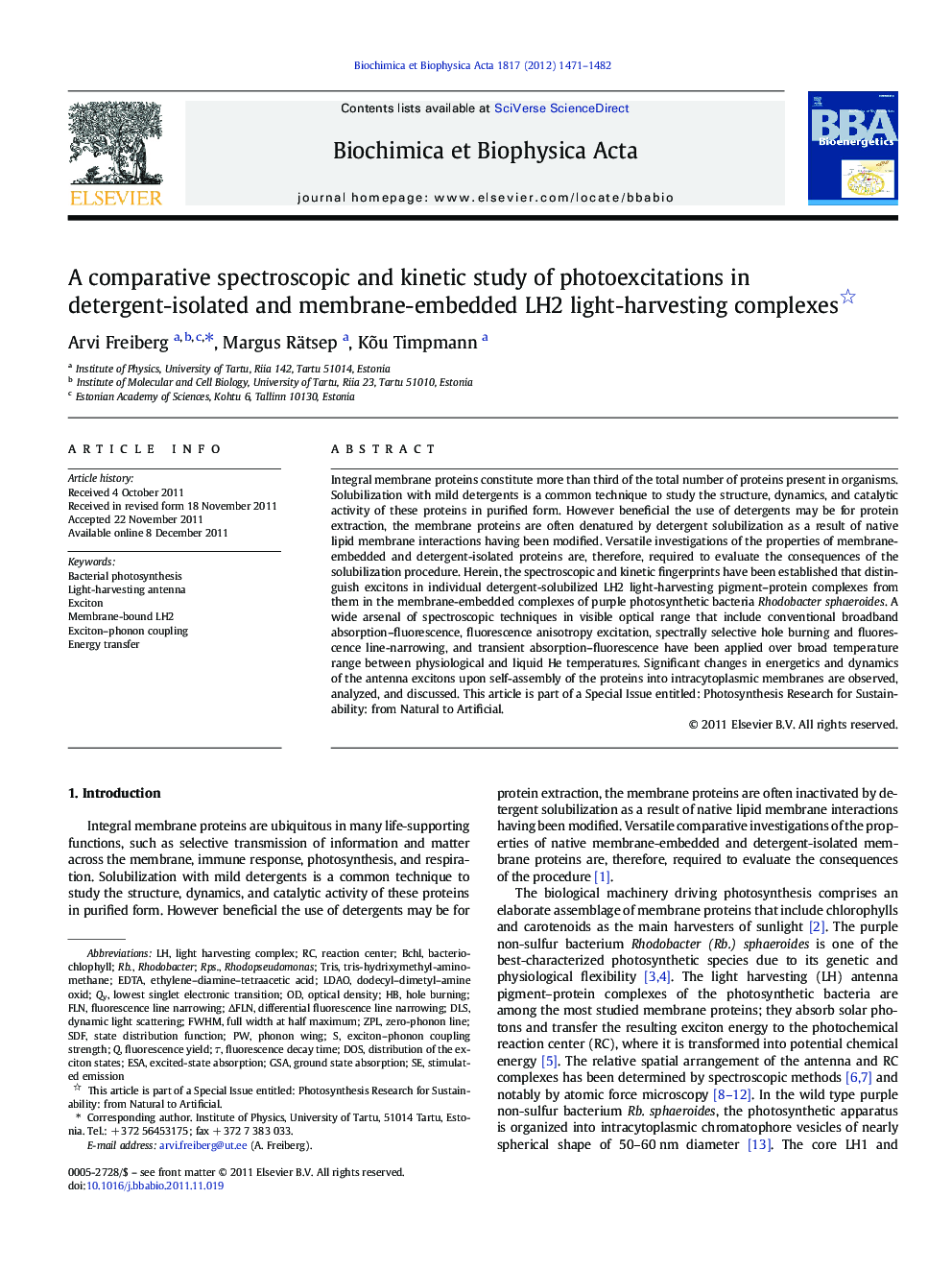| Article ID | Journal | Published Year | Pages | File Type |
|---|---|---|---|---|
| 1942423 | Biochimica et Biophysica Acta (BBA) - Bioenergetics | 2012 | 12 Pages |
Integral membrane proteins constitute more than third of the total number of proteins present in organisms. Solubilization with mild detergents is a common technique to study the structure, dynamics, and catalytic activity of these proteins in purified form. However beneficial the use of detergents may be for protein extraction, the membrane proteins are often denatured by detergent solubilization as a result of native lipid membrane interactions having been modified. Versatile investigations of the properties of membrane-embedded and detergent-isolated proteins are, therefore, required to evaluate the consequences of the solubilization procedure. Herein, the spectroscopic and kinetic fingerprints have been established that distinguish excitons in individual detergent-solubilized LH2 light-harvesting pigment–protein complexes from them in the membrane-embedded complexes of purple photosynthetic bacteria Rhodobacter sphaeroides. A wide arsenal of spectroscopic techniques in visible optical range that include conventional broadband absorption–fluorescence, fluorescence anisotropy excitation, spectrally selective hole burning and fluorescence line-narrowing, and transient absorption–fluorescence have been applied over broad temperature range between physiological and liquid He temperatures. Significant changes in energetics and dynamics of the antenna excitons upon self-assembly of the proteins into intracytoplasmic membranes are observed, analyzed, and discussed. This article is part of a Special Issue entitled: Photosynthesis Research for Sustainability: from Natural to Artificial.
► Spectra of the detergent-isolated and membrane-embedded LH2 complexes are compared. ► In detergent-isolated LH2 complexes the exciton coupling is reduced. ► In both complexes the strong exciton–phonon coupling leads to self-trapped excitons. ► Exciton relaxation into self-trapped excitons takes few hundreds of femtoseconds. ► Excitation energy transfer is present only in membrane-embedded complexes.
